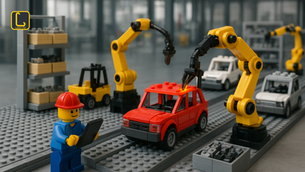

Fließfertigung – Effizienz durch Struktur und Takt
Die Fließfertigung ist eine der zentralen Organisationsformen industrieller Produktion. Sie zeichnet sich dadurch aus, dass Arbeitsplätze und Maschinen in der Reihenfolge der Bearbeitungsschritte angeordnet sind. Das Ziel: Ein kontinuierlicher Material- und Informationsfluss, der Durchlaufzeiten verkürzt, Bestände reduziert und Prozesse stabilisiert.


Werkbankfertigung neu gedacht – Zwischen Handwerk, Komplexität und digitaler Transparenz
Die Werkbankfertigung gilt vielen als Relikt vergangener Tage – ein Sinnbild handwerklicher Tradition, geprägt von Erfahrung, Improvisation und individueller Verantwortung. Doch wer genauer hinsieht, erkennt: Dieses Organisationsprinzip ist aktueller denn je. Gerade dort, wo Produkte komplex, variantenreich oder kundenindividuell gefertigt werden, spielt die Werkbankfertigung ihre Stärken aus: Flexibilität, Fachkompetenz und Eigenverantwortung.


Werkstattfertigung effizient gestalten: Herausforderungen, Materialfluss und digitale Transparenz
Entdecken Sie, wie Werkstattfertigung effizient gesteuert werden kann. Von Projektplanung über Materialfluss bis hin zu digitalen Lösungen – steigern Sie Transparenz, Qualität und Durchlaufzeiten.






Kommentare